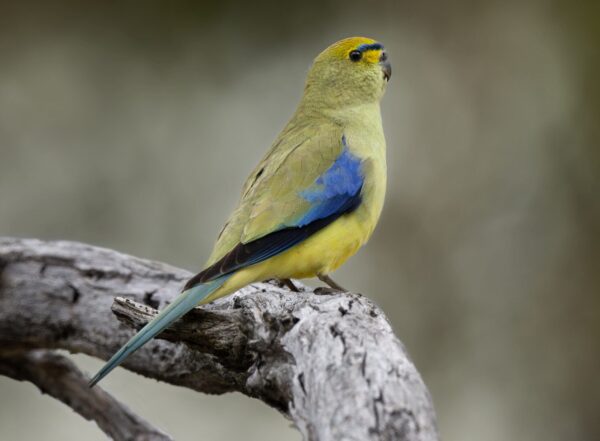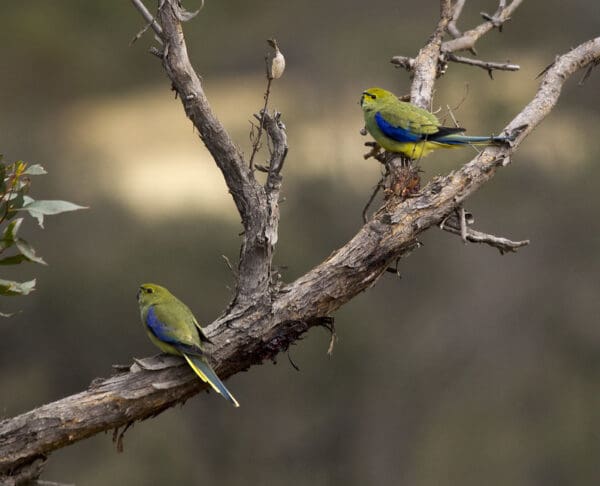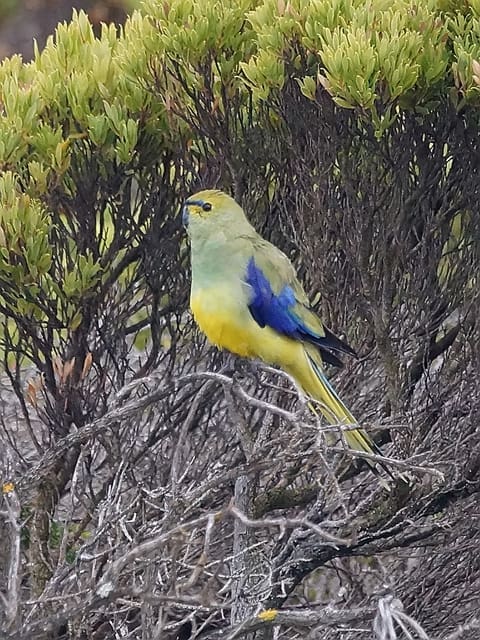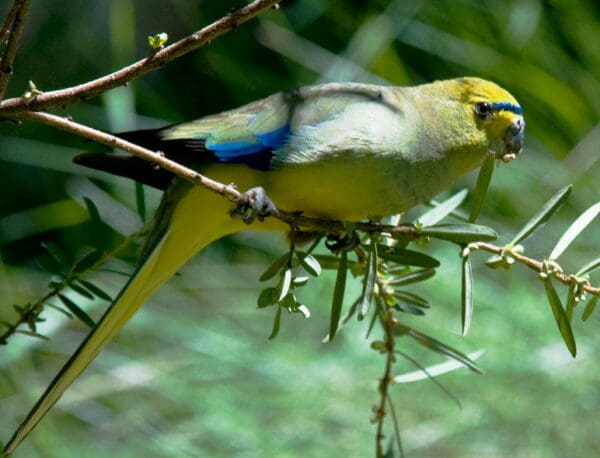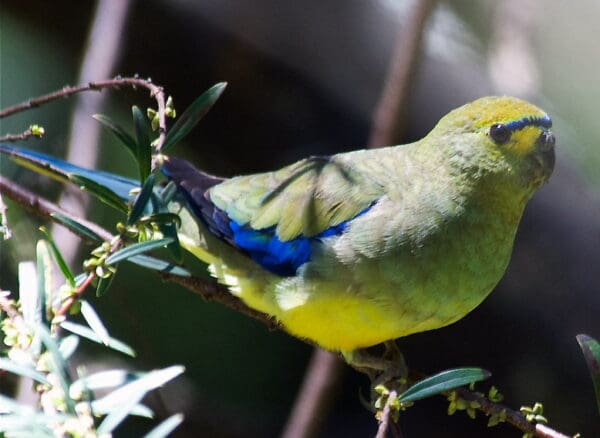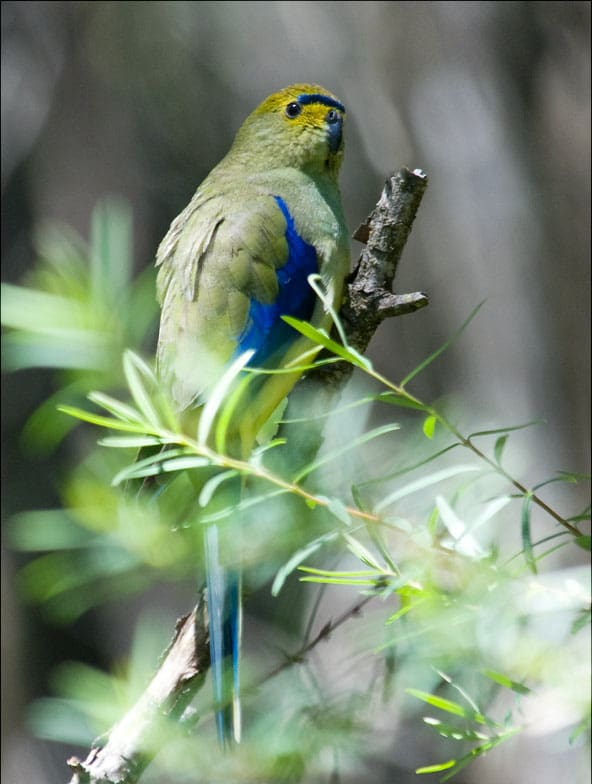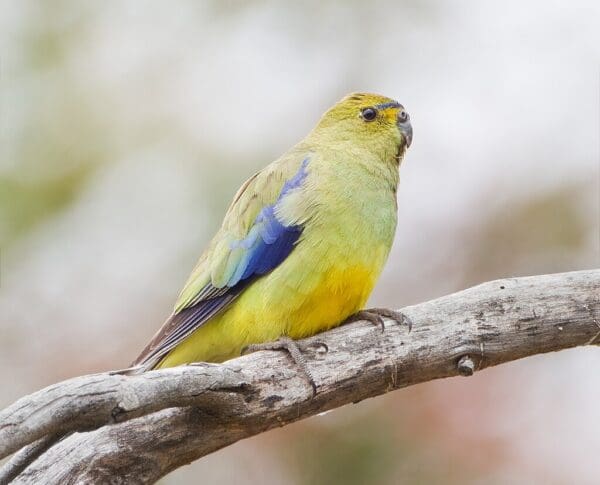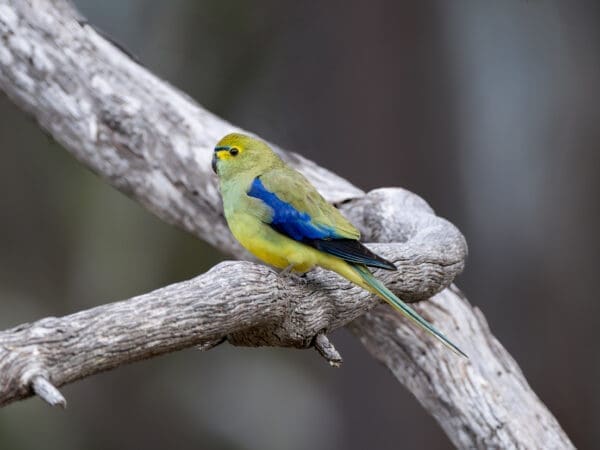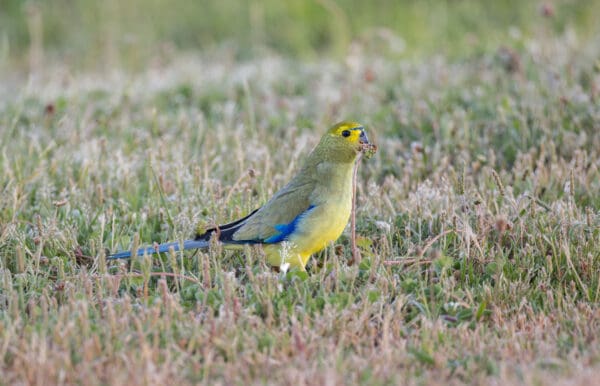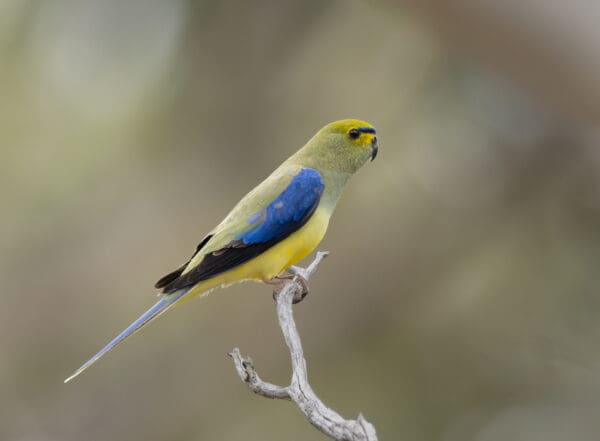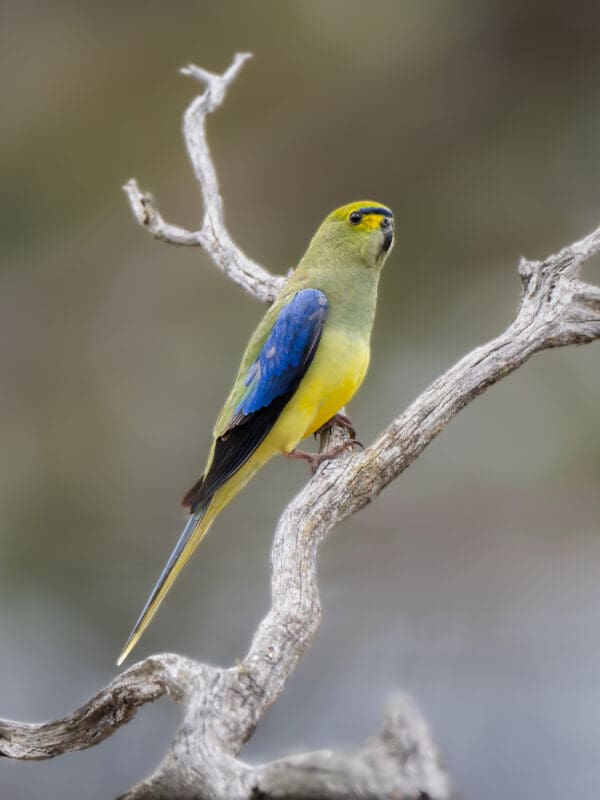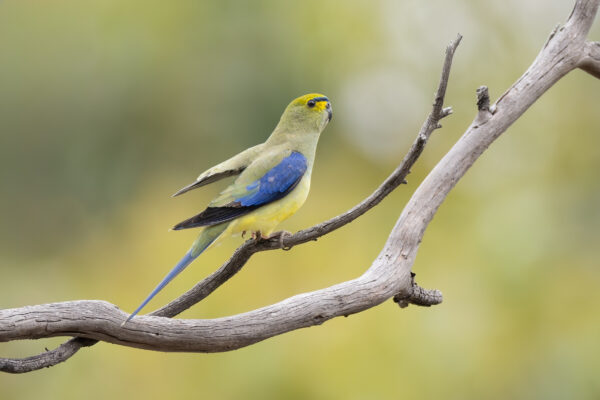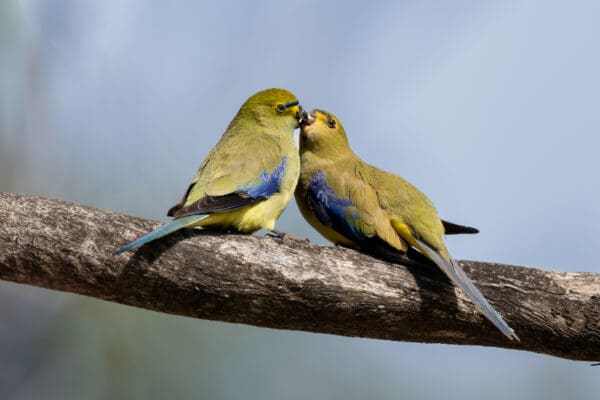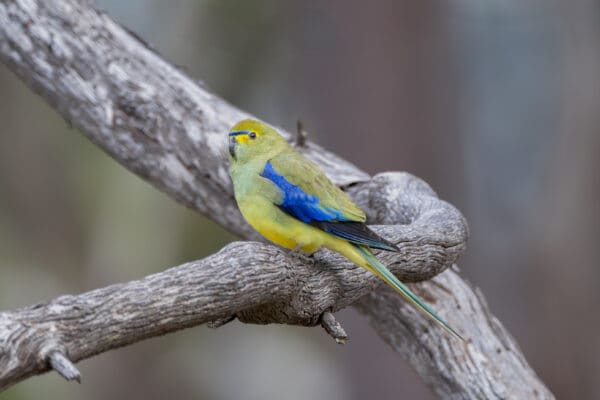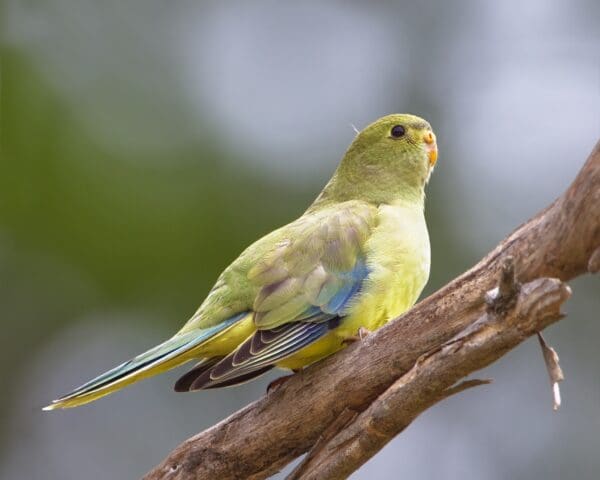Blue-winged Parrot
Also known as:
Blue-winged Grass-Parakeet, Blue-banded Parrot or Grass-Parakeet, Grass Parrot, Hobart Ground Parrot
Also known as:
Blue-winged Grass-Parakeet, Blue-banded Parrot or Grass-Parakeet, Grass Parrot, Hobart Ground Parrot
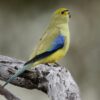
![© Ralph Green [CC BY-NC-ND 2.0] via Flickr Wild Blue-winged Parrots, female left, male right, perch on branch](https://parrots.org/wp-content/uploads/2023/01/wpt_Blue-winged-Parrot_1205-13-100x100.jpg)
![© Nik Borrow [CC BY-NC 2.0] via Flickr A wild Blue-winged Parrot forages on the ground](https://parrots.org/wp-content/uploads/2023/01/wpt_Blue-winged-Parrot_1205-12-100x100.jpg)
![© David Cook [CC BY-NC 2.0] via Flickr A wild Blue-winged Parrot perches in a bush](https://parrots.org/wp-content/uploads/2023/01/wpt_Blue-winged-Parrot_1205-9-100x100.jpg)
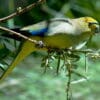
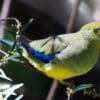
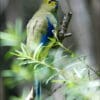

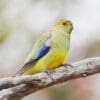
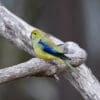
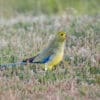


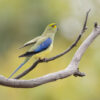
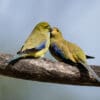


DID YOU KNOW?
The plumage of the Blue-winged Parrot becomes much brighter when the birds are in breeding condition, advertising their availability to others.

Neophema

chrysostoma
Size:
21 cm (8.2 in)
Weight:
33-60 g (1.1-2.1 oz)
Subspecies including nominate:
one
Colour Adult:
Male-bronze/yellow crown; deep blue frontal band up to eye and margined with paler green/blue above; olive/green upperparts; pale green cheeks to upper breast; yellow underparts and underside of tail, sometimes lightly washed with orange on centre of abdomen; cobalt blue upper wing coverts. Beak grey/black. Eye dark brown. Female-olive/green crown; less evident frontal band; duller blue upper wing coverts washed with olive/green; pale underwing stripe minimal or absent.
Colour Juvenile:
Frontal band absent or minimal; dull green/olive upper wing coverts margined with dull blue; underwing stripe evident in all females and most males. Beak yellow/brown.
Call:
Calls are described as soft and tinkling, with a metallic tone; also sharp and high-pitched when alarmed. Occasional soft twittering may be heard while birds are feeding.
More Information:
Content Sources:
CITES
BirdLife International
Cornell Lab of Ornithology/Birds of the World
Parrots: A Guide to Parrots of the World, Juniper and Parr, 1998
Parrots of the World, Forshaw and Cooper, 1977. 2010 edition
Parrots of the World, Forshaw, 2006.
Lexicon of Parrots, Thomas Arndt.
Parrots in Aviculture, Low, 1992.
Bird Care
Captive Status:
Common in Europe, less so in the UK and US.
Longevity:
Probably 10-15 yrs, as with other Neophema sp.
Housing:
Walk-in enclosure, minimum length 2-2.5 m (6.5-8.2 ft).
Diet:
Small seed mix such as: canary, millet, and smaller amounts of oats, buckwheat, safflower and a little hemp; limited sunflower seed; spray millet; green leaves such as: Swiss chard, lettuce, sowthistle, dandelion and chickweed; seeding grasses; rearing food made from: hard-boiled egg, wholegrain bread and carrot, all ground to crumbly consistency; complete kibble.
Enrichment:
Enjoys bathing, so provide overhead misters or a bowl of water. Mild to moderate chewer, so provide bird-safe, unsprayed branches of flowering trees, fir, pine or willow; also wooden and vegetable tanned leather toys, and heat sterilized pine cones.
Nest Box Size:
Vertical box 5″ x 5″ x 10″ (12.7 cm x 12.7 cm x 25.4 cm).
Clutch Size:
4-6
Fledging Age:
30 days
Hatch Weight:
—
Peak Weight:
—
Weaning Weight:
—
World Population:
7500-15,000 mature individuals (2021), rapidly decreasing.
IUCN Red List Status:
Vulnerable
CITES Listing:
Appendix II
Threat Summary:
In Tasmania, agriculture continues to remove habitat given that up to 40 ha can now be cleared without a permit. Fire and drought have likely had an effect, with both expected to increase in severity and frequency. Nesting birds may be subject to predation by introduced sugar gliders, cats and on the mainland foxes, which may take some birds feeding on the ground.
Range:
SE Australia, including Tasmania.
Habitat:
Seen up to 1200 m (3936 ft) in a varied range of habitats including savanna woodland, grasslands, orchards, forest clearings, farmland, coastal marshland, dune systems, heath, saltbush, mallee, mulga and other open areas.
Wild Diet:
Takes seeds of grasses, particularly Danthonia semibarbata, D. semiannularis, Aira caryophylla and Drosera peltata, also Poa caespitosa; seeds of herbs including Cryptostemma calendulaceum, Stenopetalum lineare, Helipterum jessenii, H. pygmaeum and Astroloma humifusum. Invertebrates may also be taken.
Ecology and Behaviour:
Are quite tame, approachable. Birds forage on the ground and in trees for food. Are found in pairs or small groups.
Clutch and Egg Size:
4-6 rounded eggs, 23.5 x 19.0 mm (0.9 x 0.7 in)
Breeding Season:
October-January; nest is in tree stump, trunk, or fence post. May nest colonially with several pairs.
Related Links:
—
